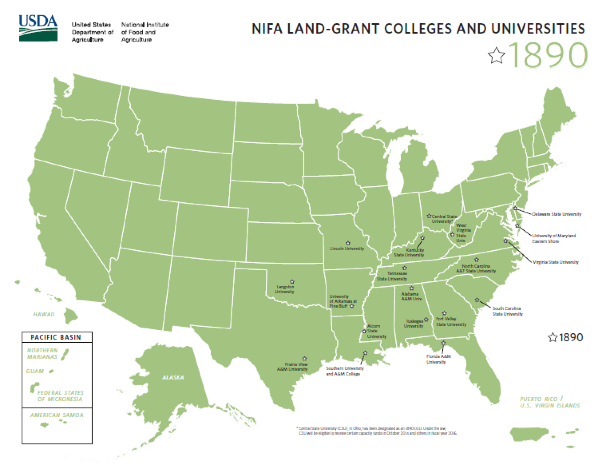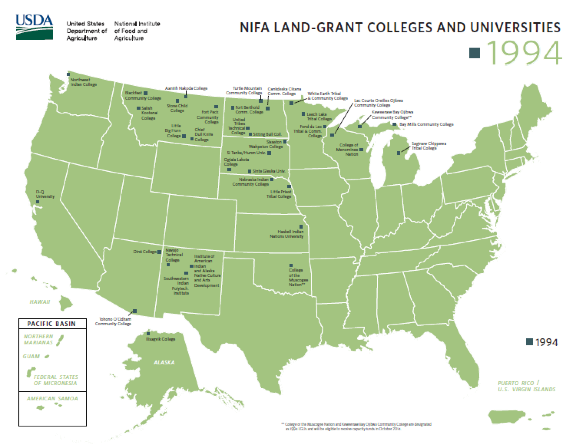Written by Andrew Norkiewicz, Summer 2017 intern in the Food Law and Policy Clinic.
When it comes to building a more food-secure future, we could probably all use some more education. Luckily, House of Representative member David Scott (D-GA) proposed a marker bill earlier this year to fund student scholarships at historically black land grant colleges and universities (H.R. 51).
Land-grant colleges and universities were created in the second half of the nineteenth century when Congress gave federal lands to states to fund the establishment of agricultural schools. Today, land grants operate a number of important research and extension programs, including efforts to better serve disadvantaged producers, increase productivity on farms, and enhance natural resource management.
Rep. Scott’s bill would award $1 million to each of the 1890 land grants, historically black colleges and universities that were established by the Second Morrill Act of 1890. This funding would be available to students who “intend to pursue a career in the food and agricultural sciences.”
This bill comes at an important time, as land grants are leading projects to advance a variety of issues facing the agricultural industry, from food waste and food insecurity to natural resource conservation and climate change adaptation. With the 2018 Farm Bill just around the corner, many advocates are asking how Congress can help bring young, diverse minds to the agricultural sector.
This bill takes a small step to address a number of growing concerns facing agricultural communities across the nation: the increasing age of farmers, the need for assistance to beginning farmers, the lack of diversity in the field, and the importance of research in solving agricultural challenges. Despite these advantages, this bill also highlights the stark inequality of participation that plagues our food system and agricultural industries.
In terms of equal access in the field of education, it must be admitted that the U.S. has had a checkered past. Now, in the field of agriculture, it is more important than ever to include every voice possible, from consumers and producers to distributors and food processors. To that end, Rep. Scott’s bill should be expanded in scope to include more diverse populations, including the 1994 (Native American) land grants and women. More scholarships and other incentives to improve diversity in agricultural training and research would take an important step, not only for agriculture, but education equality and access as well.
The continued disparity that would persist, even with the passage of this bill, is perhaps best conveyed visually. The map below demonstrates the geographic scope of the land grants that would be affected by this bill.

As the map illustrates, the 19 colleges and universities characterized as 1890s land grants are concentrated in the southeast. Therefore, while the bill may increase diversity in the agriculture workforce in this area (which is important, as black farmers make up less than 10% of the total agricultural workforce in nearly every southeast state), the bill does little to address other systemic inequalities built into the nation’s food system.

These universities, which largely serve Native American populations, face very different agricultural challenges and work in very different conditions than farmers in the Southeast., Many Native American communities face unique issues, including higher rates of diet-related diseases, tribal consent concerns when it comes to large-scale agricultural projects, and close spiritual ties with food, agriculture, and land. Without better serving these institutions, and the populations with which they work, the agricultural industry will continue to struggle to improve diversity and bring more voices to the table.
In the end, Rep. Scott’s bill is a step in the right direction, and Congress should support it. But it is also a half measure for solving equity issues facing U.S.’s agriculture. More programs, funding, and resources must be made available for all socially disadvantaged and historically underserved groups, especially when those groups face radically different challenges in terms of food production, consumption, and nutrition.
While we should applaud the efforts of Rep. Scott to address a number of issues in the farming community through a single bill, this proposal should also serve as a reminder that we have a long way to go in ensuring that everyone has a voice in our nation’s food and agricultural system.
